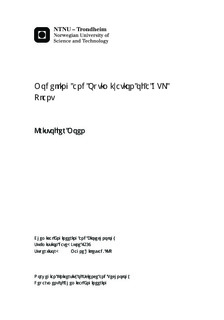| dc.description.abstract | A gas-to-liquid process converts gaseous carbon feedstock into more valuable products. Recent technological improvements have led to an increased interest in this production method. This master s thesis has evaluated three different gas-to-liquid configurations to determine which design favors production of longer hydrocarbon chains (wax). All of the configurations were simulated with the AspenTech process simulator HYSYS V8.0, where kinetics from Todic et al.(2013) describe the Fischer-Tropsch product distribution. Only one pass through the reactor could be simulated because of the HYSYS implementation limitation, where C1-C15 alkanes and C2-C15 alkenes were included as products. Utilization of tail gas from the hydrogen plant resulted in a synthesis gas with a lower H2/CO ratio. Larger amounts of longer chains were detected and methane production was less favorable when this synthesis gas was processed in the Fischer-Tropsch synthesis. Configuration 2, where both water and products were separated between three smaller reactors, gave the highest carbon and energy efficiency, namely 31 and 13 %. | |

